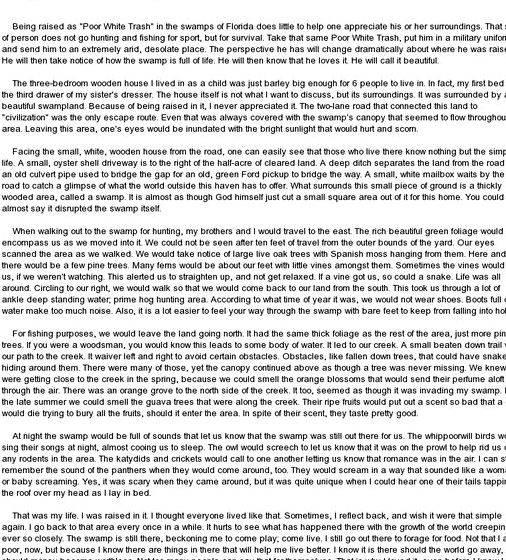
The purpose of the results section of the thesis is to report the findings of your research. You usually present the data you obtained in appropriate figures (diagrams, graphs, tables and photographs) and you then comment on this data. Comments on figures and tables (data commentary) usually have the following elements Aug 25, · By explaining what your findings chapter will include, you will prime your reader to understand what follows. This may involve briefly restating the methods of analysis used, particularly if your work includes statistical data. Look Back to the Rest of Your Thesis This is especially true for the literature review and methodology blogger.comted Reading Time: 2 mins Your findings should provide sufficient evidence from your data to support the conclusions you have made. Evidence takes the form of quotations from interviews and excerpts from observations and documents. Ethically you have to make sure you have confidence in your findings and account for counter-evidence (evidence that contradicts your primary finding) and not report something that does not have sufficient evidence to back it up. Your findings should be related back to your
6 Tips for Writing your Dissertation Results and Findings
After conducting a literature review, how to write up your dissertation findings, designing your research, gathering data and performing in-depth analysis, it can be tempting to cut corners when it comes to presenting the results and findings in your dissertation. The keys to success here are clarity and context. Clarity is important because you need your data to be easy to understand.
Context is important because you need to communicate the significance of your results in relation to the research questions. As such, it is always a good idea to follow these helpful tips. Many schools will have a style guide covering what is expected from the results and findings chapter of your work. Different disciplines present results in different ways. In the hard sciences, for instance, basic findings are often presented separately from the discussion. In the social sciences, however, it is more common to present the results and discussion at the same time.
How to write up your dissertation findings explaining what your findings chapter will include, you will prime your reader to understand what follows.
This may involve briefly restating the methods of analysis used, particularly if your work includes statistical data. This is especially true for the literature review and methodology chapters. Referring to the literature review allows you to compare your results to those achieved by others in your field. Referring to your methodology, meanwhile, lets you determine whether your findings were influenced by the techniques used to gather and analyze data.
Instead, you need to explain the significance of your results in relation to your hypothesis and justify your conclusions. A well-chosen table or graph is an excellent way of presenting your data. However, remember that using too many graphs and charts without explaining their significance can be confusing for the reader!
If you need more tips on how to write your dissertation, you should check out how to write up your dissertation findings rest of our academic blog. That way you can rest assured that your work will be its very best!
Results, Discussion Conclusion chapters
, time: 17:55Reporting and discussing your findings - Research & Learning Online

Mar 07, · When you are writing the findings of your dissertation, you need to be very selective. Only the clear and precise observation must be there in your finding section, which is crucial for your dissertation. This section talks about the statistical analysis along with a statement of whether the results you have obtained are significant or not Aug 25, · By explaining what your findings chapter will include, you will prime your reader to understand what follows. This may involve briefly restating the methods of analysis used, particularly if your work includes statistical data. Look Back to the Rest of Your Thesis This is especially true for the literature review and methodology blogger.comted Reading Time: 2 mins Your findings should provide sufficient evidence from your data to support the conclusions you have made. Evidence takes the form of quotations from interviews and excerpts from observations and documents. Ethically you have to make sure you have confidence in your findings and account for counter-evidence (evidence that contradicts your primary finding) and not report something that does not have sufficient evidence to back it up. Your findings should be related back to your
No comments:
Post a Comment